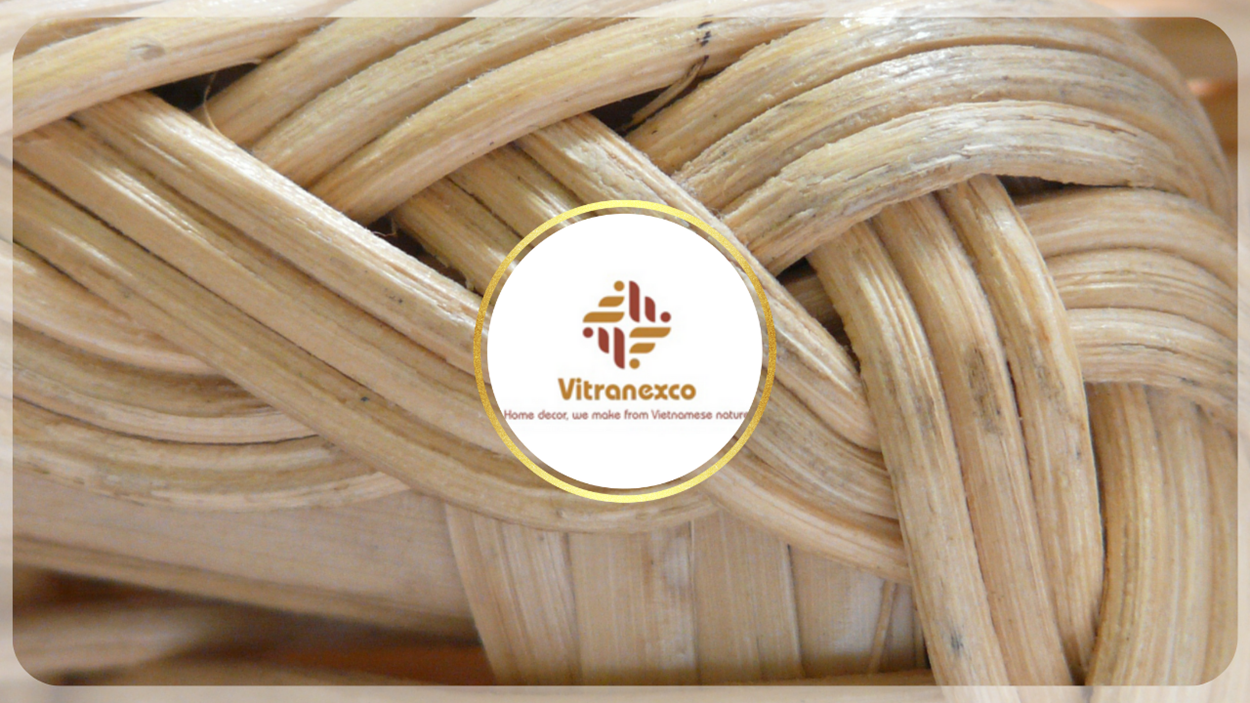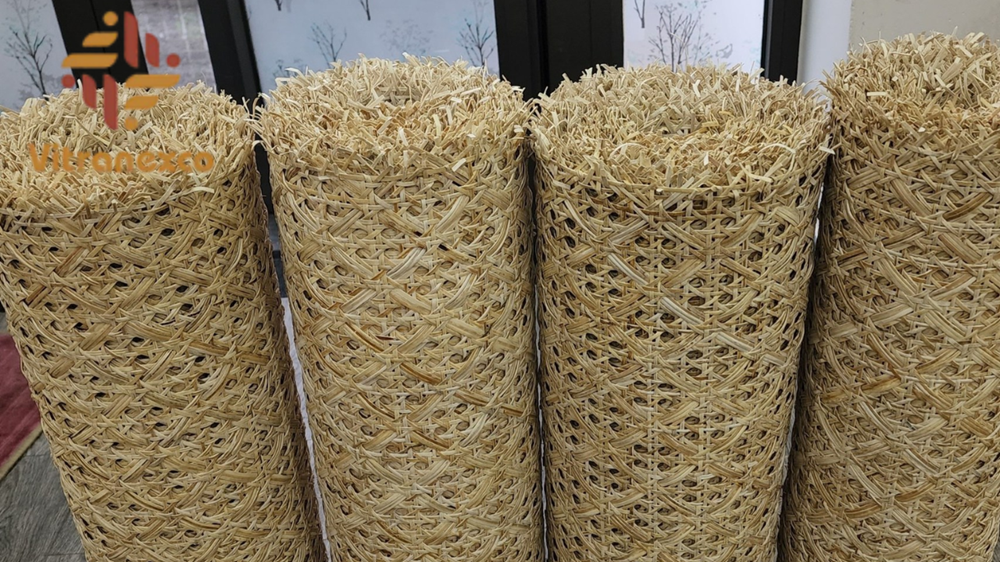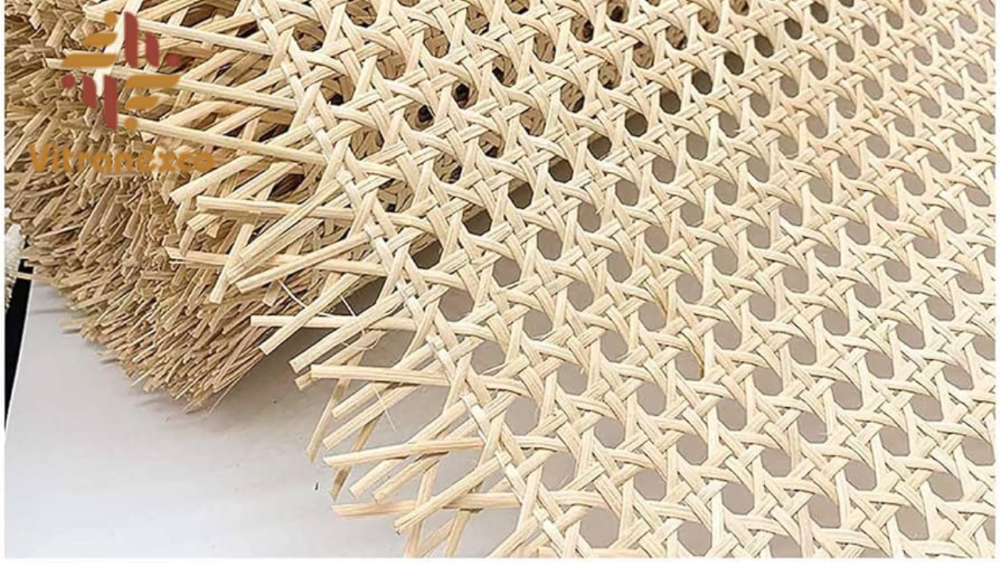How to make rattan furniture from natural materials
- Chủ nhật - 09/03/2025 06:13
- In ra
- Đóng cửa sổ này

1. Preparing the materials for rattan furniture
1.1 Selecting quality rattan for rattan furniture
The first step in making rattan furniture is to choose high-quality rattan. Look for strong, flexible, and well-dried rattan canes. Selecting the right rattan ensures durability, ease of shaping, and a polished final product. You can find rattan from:
- Specialty craft stores: These stores often carry processed rattan, ready for use in furniture making, with different sizes and qualities available.
- Furniture material suppliers: Many suppliers offer bulk rattan for professional artisans, often providing a variety of types, from raw to pre-treated materials.
- Directly from rattan growers (if available in your region): Purchasing directly from growers allows access to fresh, high-quality rattan and may offer cost benefits, though additional processing may be required before use.
Ensuring that the rattan is properly selected from a reliable source is crucial, as it affects the strength, flexibility, and longevity of the final furniture piece.
1.2 Cutting and soaking rattan for rattan furniture
Raw rattan needs preparation before use. Follow these steps:
+ Cutting: Use a sharp saw or cutting tool to trim rattan canes to the desired length. Ensure that the cuts are clean and even to prevent splintering or fraying. Depending on the design of the furniture, different thicknesses of rattan may be required, so it is important to measure carefully before cutting. Proper cutting makes it easier to assemble and shape the rattan into the desired structure.
+ Soaking: Soak the rattan in warm water for several hours to make it more pliable. The soaking time may vary depending on the thickness and type of rattan, but in general, thinner canes require less time, while thicker ones may need to soak longer. This process softens the fibers, allowing the rattan to bend and weave smoothly without cracking or breaking. For best results, use clean water at a moderate temperature and ensure that the rattan is fully submerged throughout the soaking process.
1.3 Treating the rattan for rattan furniture
To prevent mold growth and extend the lifespan of your furniture:
~ Boil the rattan: Boiling the rattan in hot water for a certain period helps remove excess moisture trapped inside the fibers. This process not only prevents mold growth but also eliminates insects and larvae that may be present in the raw material. The duration of boiling depends on the thickness of the rattan, but it is essential to ensure even exposure to heat for effective treatment. After boiling, allow the rattan to dry completely before further processing.
~ Apply a preservative: Once the rattan is dry, applying a protective coating helps maintain its durability. Natural oils, such as linseed or tung oil, nourish the fibers and enhance flexibility, preventing the material from becoming brittle over time. Alternatively, a light coat of varnish or sealant creates a protective barrier against moisture, dust, and other environmental factors. Regular maintenance and reapplication of preservatives will further extend the life of the rattan furniture.

2. Crafting the rattan furniture
2.1 Creating the frame for rattan furniture
The frame is the backbone of your rattan furniture, providing structural support and defining its shape. Follow these steps to build a strong and durable frame: Design a structure by sketching or planning the furniture piece, whether it’s a chair, table, or sofa, while carefully considering dimensions, proportions, and weight-bearing capacity to ensure stability and comfort; select sturdy rattan poles that are thick, firm, straight, and properly dried to prevent warping over time, as they need to support the furniture’s weight; shape and bend the rattan by soaking or steaming the poles to make them flexible before molding them into the desired form, allowing them to dry completely to retain their shape; and bind joints securely using nails, rattan strips, or a combination of both, with the added benefit of wrapping rattan strips around joints to strengthen the frame while also enhancing the aesthetic by concealing connections.2.2 Weaving the rattan for rattan furniture
Rattan weaving is an intricate process that adds texture, comfort, and style to your furniture. Different weaving techniques create distinct patterns and appearances: Plain weaving, the simplest weaving method, involves an over-and-under pattern that is commonly used for basic furniture pieces and is ideal for beginners due to its straightforward technique, while herringbone weaving, a more complex technique, creates a V-shaped or zigzag pattern that adds a decorative touch to high-end furniture and requires precise weaving to maintain consistency and symmetry, and loop weaving, often used for armrests, edges, and decorative elements, involves looping rattan strands to form intricate patterns that enhance the furniture’s visual appeal.Proper weaving ensures the furniture is both aesthetically pleasing and comfortable, making it a crucial step in rattan craftsmanship.
2.3 Securing and fastening rattan furniture
To ensure that your rattan furniture remains sturdy and long-lasting, take the following measures: Use strong adhesives by applying high-quality glue or resin-based adhesives at key joints to provide extra bonding strength and reinforce areas that experience frequent stress, tighten joints by securely wrapping rattan cords around connections or using small screws where extra support is needed to prevent loosening over time, and check for loose ends by thoroughly inspecting the furniture for any weak spots or stray strands, reinforcing them through rewrapping, tightening, or applying additional adhesive to ensure long-term durability and prevent future damage.By carefully constructing, weaving, and securing the rattan, you can create high-quality furniture that is both functional and visually appealing.

3. Finishing and preservation of rattan furniture
3.1 Sanding and smoothing rattan furniture
After completing the weaving process, it is essential to smooth out any rough edges for comfort and durability by gently sanding the rattan surface with fine-grit sandpaper, especially at the weaving ends and sharp edges to prevent splinters, paying close attention to joints and curves where rough spots are common to ensure smooth transitions for both aesthetics and comfort, and finally, removing dust and debris with a soft cloth or brush to achieve a clean surface before applying any finishing coats.3.2 Applying finishing coats to rattan furniture
Finishing coats not only enhance the appearance of rattan furniture but also protect it from environmental damage, so choosing the right finish based on the desired look and level of protection is crucial; applying a clear varnish helps seal the rattan against moisture, dust, and UV rays, making it ideal for outdoor furniture, while natural stains enrich the rattan’s color and texture without compromising its organic feel, and for those seeking a more customized aesthetic, painting with high-quality spray or brush-on paint provides a unique and modern touch, ensuring even coverage with multiple thin coats, after which the finishing coat must be allowed to dry completely for a smooth and long-lasting result.3.3 Maintenance and care for rattan furniture
Proper maintenance is essential for preserving the beauty and longevity of rattan furniture, which includes regularly wiping it down with a soft, damp cloth to remove dust and dirt while avoiding excessive water that can weaken the fibers, minimizing direct sunlight exposure to prevent the material from drying out and becoming brittle, and periodically applying natural oil treatments like linseed or lemon oil to restore moisture, maintain flexibility, and prevent cracking, ensuring the furniture remains in excellent condition for years to come.By following these steps, your rattan furniture will remain strong, beautiful, and functional for years to come.

Conclusion
Making rattan furniture from natural materials is a rewarding and sustainable craft. By carefully selecting quality rattan, mastering weaving techniques, and applying proper finishing touches, you can create beautiful and long-lasting furniture pieces. Whether you are a DIY enthusiast or a professional craftsman, this process allows you to contribute to an eco-friendly lifestyle while adding a unique touch to your home decor.
=> LEARN MORE: How much does rattan webbing cost?CONTACT
VITRANEXCO LIMITED COMPANY - The leading supplier of raw materials: rattan, bamboo,... in Vietnam
- Website: https://vitranexco.com/
- Facebook: https://www.facebook.com/
- Instagram: https://www.instagram.com/vitranexcolimitedcompany/
- Alibaba: https://vitranexco.trustpass.alibaba.com/